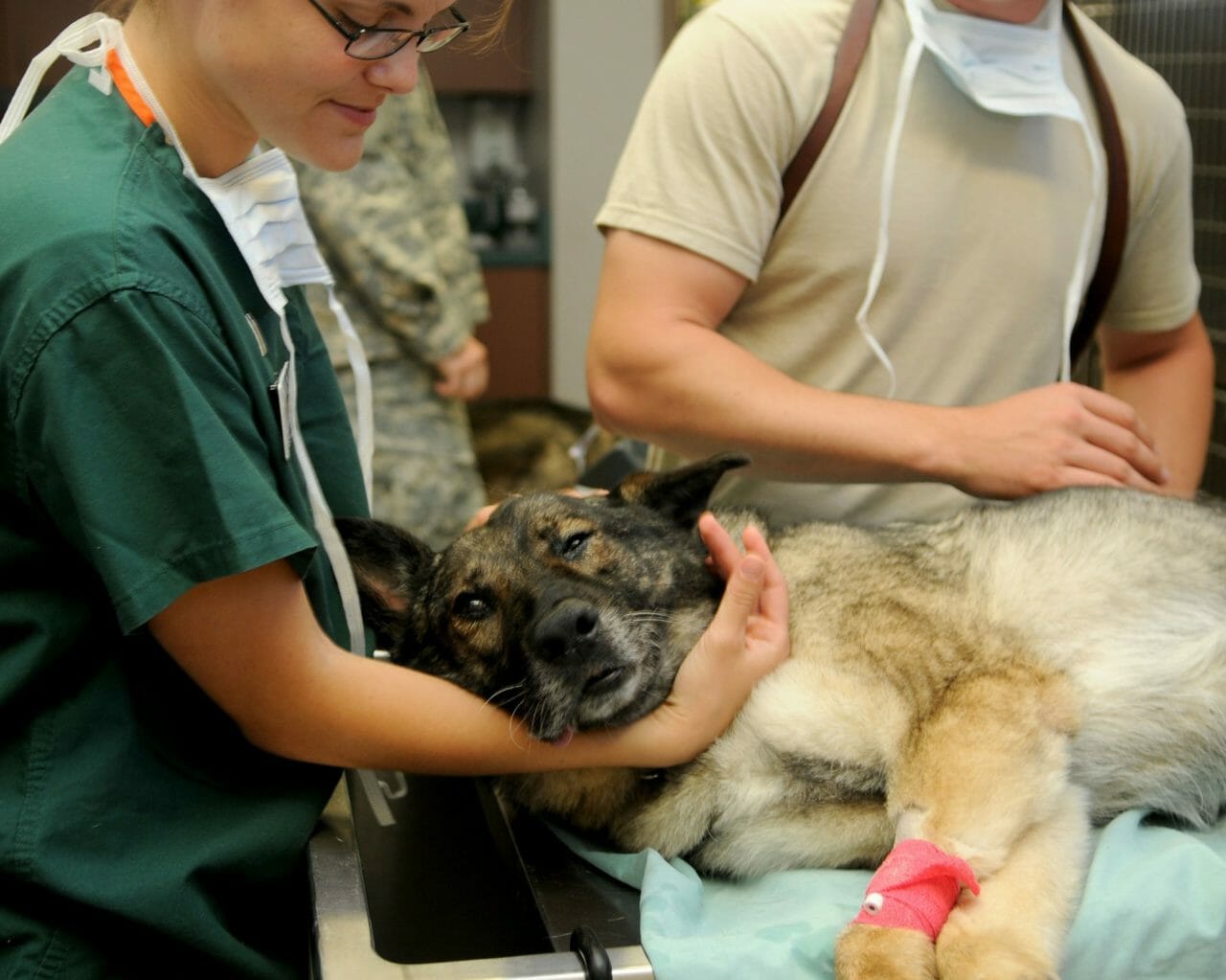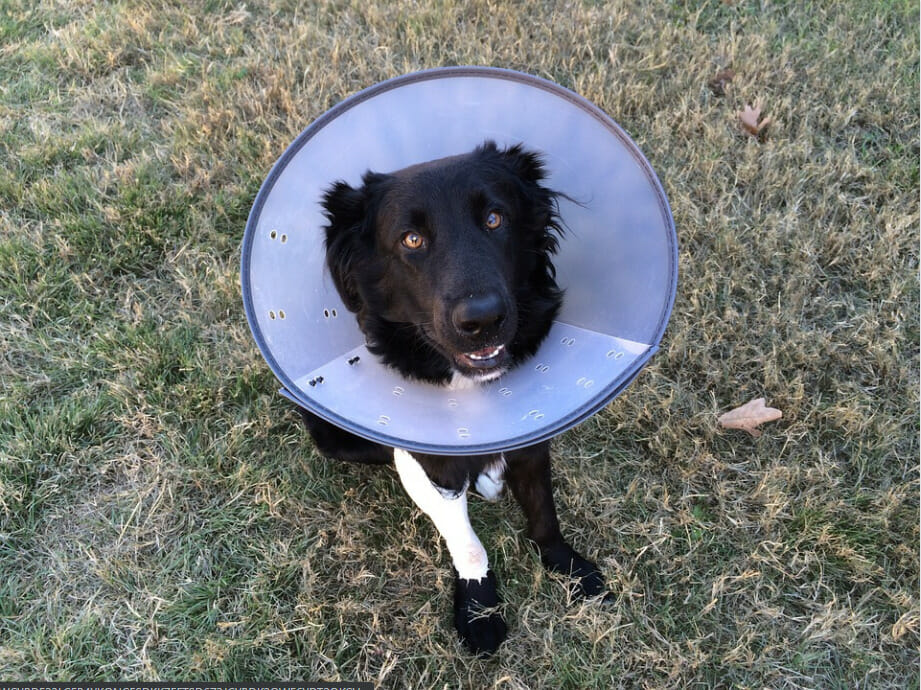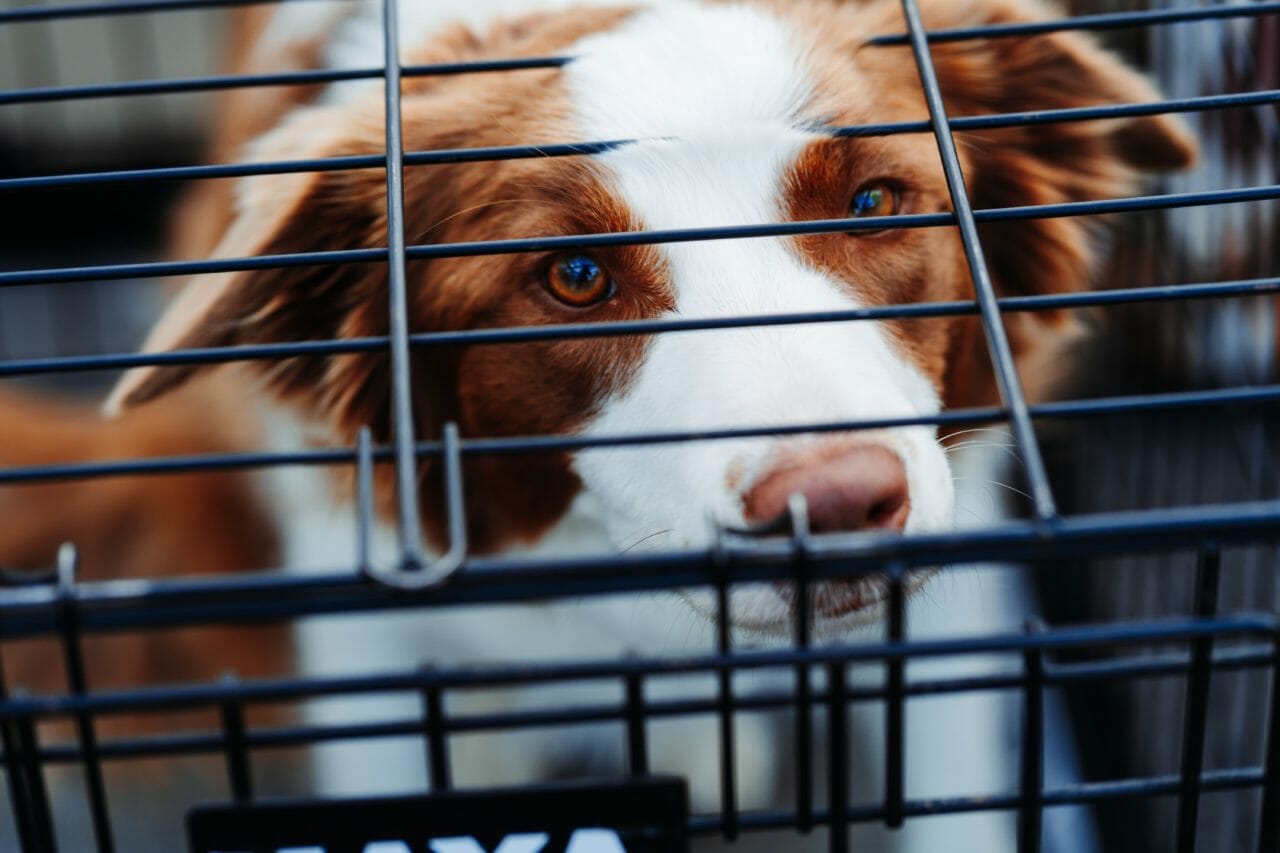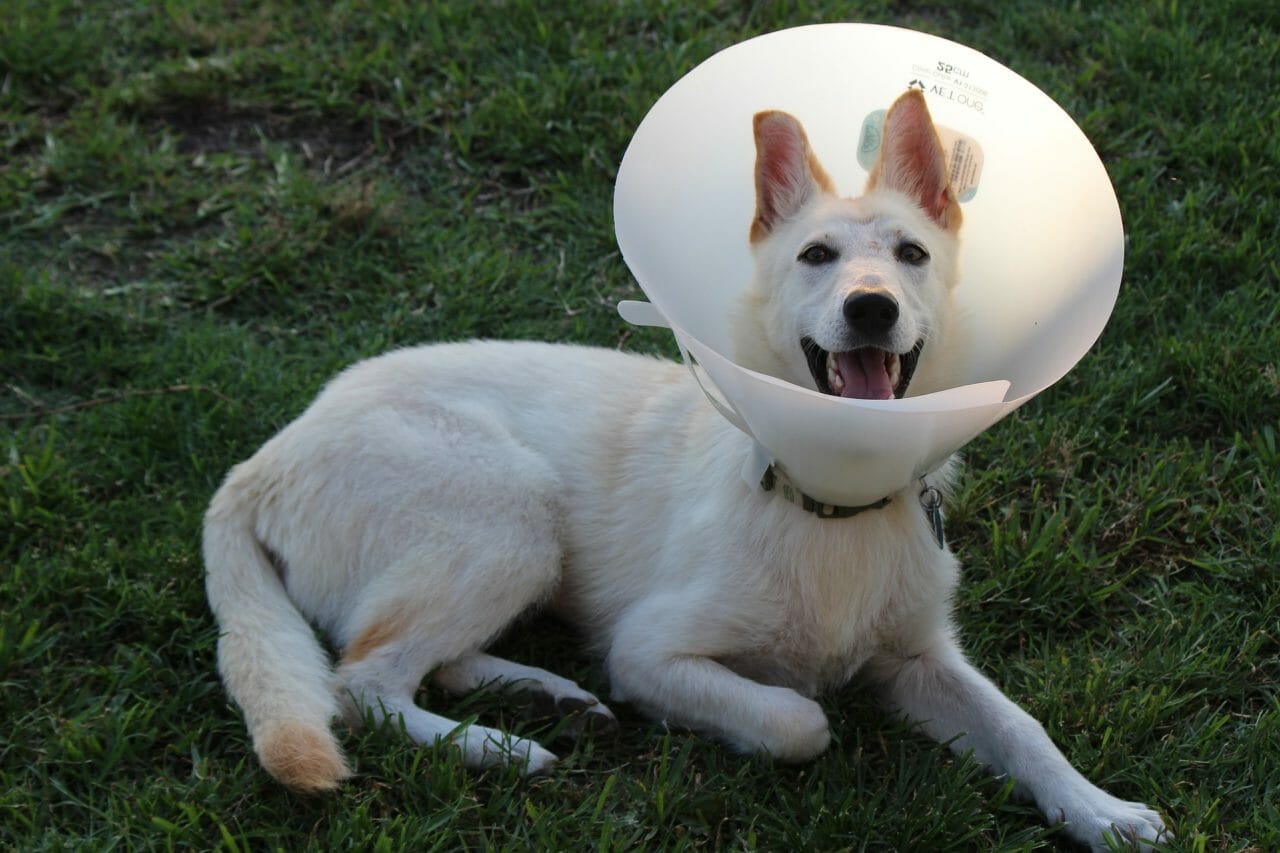Rehab Pet has created the ultimate guide for dog owners who are dealing with TPLO Surgery
While surgeries are pretty common in the world of dogs, being told that your furry friend requires any type of procedure can bring a range of emotions from worry to anxiety.
One of the most common orthopedic surgeries performed on dogs is TPLO or tibial plateau leveling osteotomy surgery, and while it can sound complicated and scary, the surgery is fairly quick, lasting only 45 minutes to one hour.
Rehab Pet invites you to take a deeper look into TPLO surgery, using our TPLO recovery guide, and discuss what TPLO surgery is, why it’s needed, and what the recovery process looks like for your pup.
What Is TPLO Surgery?
TPLO surgery is also known as “tibial plateau leveling osteotomy” and is a common orthopedic procedure used to treat cranial cruciate ligament tears in dogs.
The cruciate ligaments are found in the knee and act as stabilizers, connecting the tibia (shin bone) to the femur (thigh bone).
When these ligaments become torn or ruptured, it can cause your dog a great deal of pain and make it difficult for them to put any weight on the affected leg. Think of this as the human equivalent of an ACL tear: The surgery helps to reconstruct the dog’s knee.
While there are other surgical options to treat this condition, like tibial tuberosity advancement (TTA) or lateral fabellotibial suture (LFS), TPLO surgery is often the preferred option, as it has a high success rate and provides long-term relief for your dog.
Why Is TPLO Surgery Needed?
As we mentioned previously, TPLO surgery is needed when your dog has a torn or ruptured cranial cruciate ligament.
This can happen for a number of reasons including:
- Injury: If your dog is involved in an accident or plays too roughly, this can put a lot of strain on the knee and cause the ligament to tear.
- Obesity: Dogs who are overweight are more likely to develop joint problems, like arthritis, which can lead to a torn cruciate ligament.
- Age: Just like humans, as dogs get older they are more susceptible to developing joint problems.
- Diet: A poor diet that is lacking in the necessary nutrients and vitamins needed for strong bones and joints can also lead to a torn cruciate ligament.
No matter the reason, making sure the tear is fixed is important for your dog’s long-term health and mobility.
What Are the Risks of TPLO Surgery?
As with any surgery, there are always risks involved, but the benefits your dog will experience usually outweigh any potential risks.
It’s important you have a veterinarian that can help guide you through the entire process of the pre- and post-surgery needs your dog will have as well as answer your questions.
The most common risks associated with TPLO surgery include:
- Infection
- Excessive bleeding
- Slower healing process
- Tibial fracture
- Reaction to anesthesia
While these complications are rare, it’s important to discuss them with your veterinarian prior to surgery to ensure you are making the best decision for your dog.
How Will My Dog Feel Following the TPLO Surgery?
As your dog starts to come out of anesthesia, it may be a little disoriented and confused. This is completely normal and will pass as they fully wake up.
You may also notice some swelling around the knee, which is normal but should start to subside after a few days
Your dog will likely be placed on pain medication to help manage any discomfort it may feel following the surgery. It’s important not to skip any doses or give your dog any human pain medication, as this can be very harmful.
In the first 24 hours following surgery, your dog will need to remain quiet and calm to allow the incision site to heal properly. This means no playing, running, or jumping..
To help keep your dog calm, crate rest is often recommended. This means keeping them in a crate or small space where they can’t move around too much. This will help prevent any accidental movement that could cause further damage or irritation to the incision site.
After 24 hours, your pup should be fine to start walking on the leg, and within a two-week period, you should also start giving your dog short walks around the block or in your yard to help strengthen the leg.
As your dog starts to feel better, you can slowly increase the length and intensity of their walks. Just be sure to listen to your veterinarian’s instructions on how much activity is too much.
How Long Will It Take for My Dog to Fully Recover?
The entire recovery process can take anywhere from 12 to 16 weeks.
During this time, you’ll need to be patient and help your dog through each stage of the healing process. This means plenty of rest, short walks, a healthy diet, and regular check-ups with your veterinarian.
If you follow all the instructions given to you and take care of your dog, they should make a full recovery and be able to enjoy their life to the fullest.
After Surgery, What Should I Do To Maintain My Dog’s Health?
Getting back to a normal routine with your pup is the No. 1 thing all owners want, but rushing the recovery process can do more harm than good.
Here are a few things you should keep in mind during your dog’s recovery:
Give Them Plenty of Water and High-Quality Food
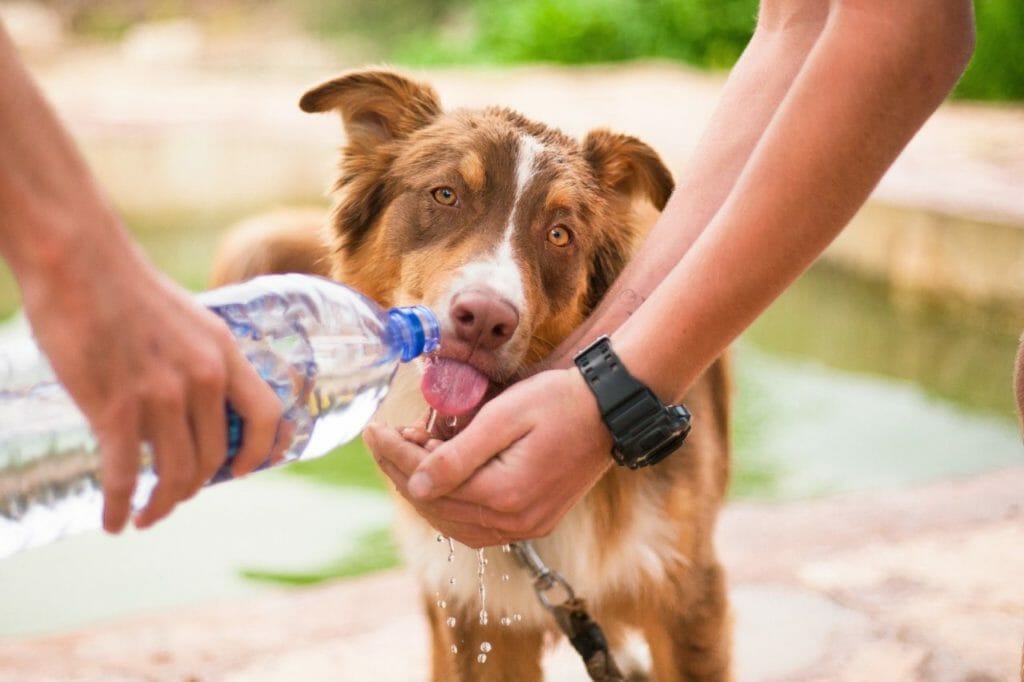
Ensuring your dog gets the right vitamins and minerals is key to a successful recovery.
Make sure you are feeding your dog high-quality food that meets their nutritional needs.
You should also make sure they have easy access to fresh water at all times. Overfeeding your dog during this time can lead to obesity and other health problems down the road, so make sure you are portioning their meals correctly.
Check On Them Regularly
After bringing your dog home from the vet, it’s important to check on them regularly and see how they are feeling. They will most likely do a lot of sleeping for the first 24 hours after surgery.
If you notice any redness, swelling, or discharge from the incision site, be sure to contact your veterinarian right away. It’s also important to keep an eye on their energy levels and activity level to make sure they are not overdoing it.
Provide Them With the Proper Medication
Your veterinarian will send you home with specific pain medication and anti-inflammatory medication for your dog. It’s important that you follow the dosage instructions and don’t skip any doses.
If you think your dog is in pain or isn’t responding well to the medication, be sure to contact your veterinarian right away.
Visit Your Vet for Follow-Ups
As part of the recovery process, your veterinarian will likely schedule a few follow-up appointments to check on your dog’s progress.
During these appointments, they will check the incision site, range of motion, and overall mobility. They may also take X-rays to see how well the healing process is going.
Be sure to keep all of your appointments and let the vet know if you have any concerns.
Limit Physical Activity
As your dog starts to feel better, it may want to run and play as they did before surgery. However, it’s important to limit their physical activity during the recovery process.
Too much activity can lead to complications and prolong the healing process. Only give your dog short walks around the block or in your yard for the first few weeks. You can slowly increase the length and intensity of their walks as they start to feel better.
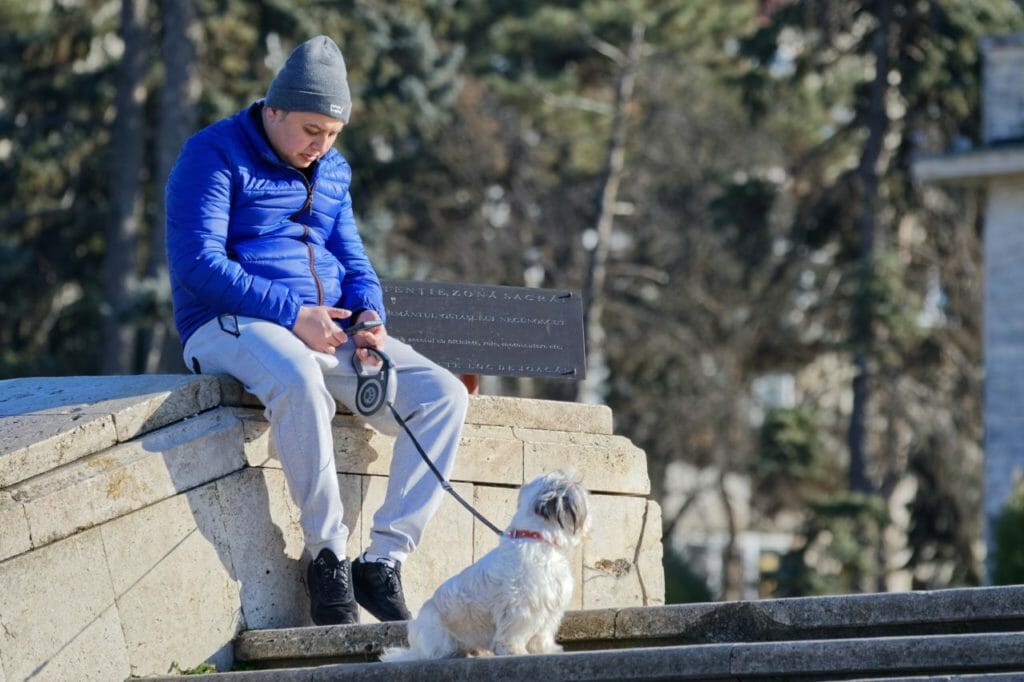
Don’t Let Your Dog Lick or Chew Their Stitches
It’s important to keep your dog from licking or chewing their stitches, as this can lead to infection.
You may need to put a cone on their head or use an Elizabethan collar to prevent them from reaching the incision site. Be sure to follow your veterinarian’s instructions on how long your dog needs to wear the cone or collar.
Give Them Lots of Love
Recovering from surgery can be a tough process for both you and your dog. They may be in pain and feel uncomfortable.
Make sure to give them lots of love and attention during this time. Try to keep their routine as normal as possible and provide them with plenty of rest.
If you follow all the tips inside our TPLO recovery guide, you’ll be sure to have a happy and healthy pup in no time!
